
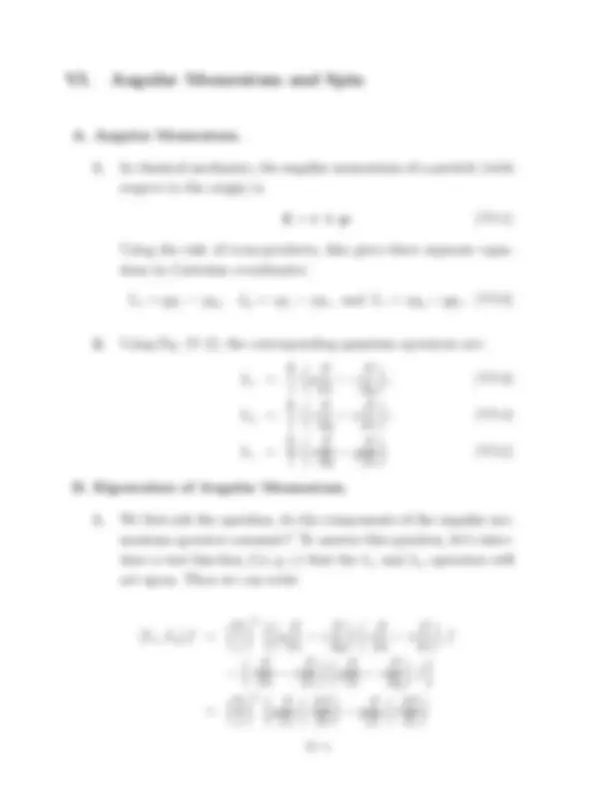
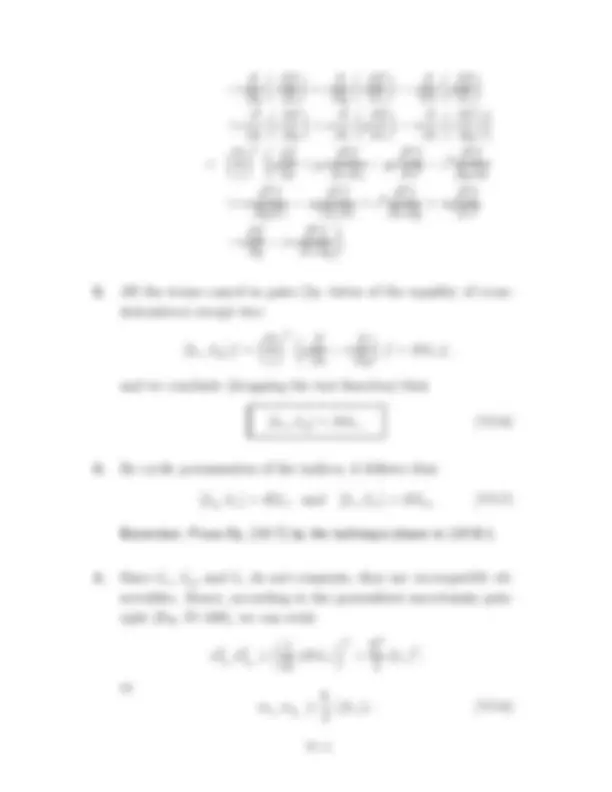
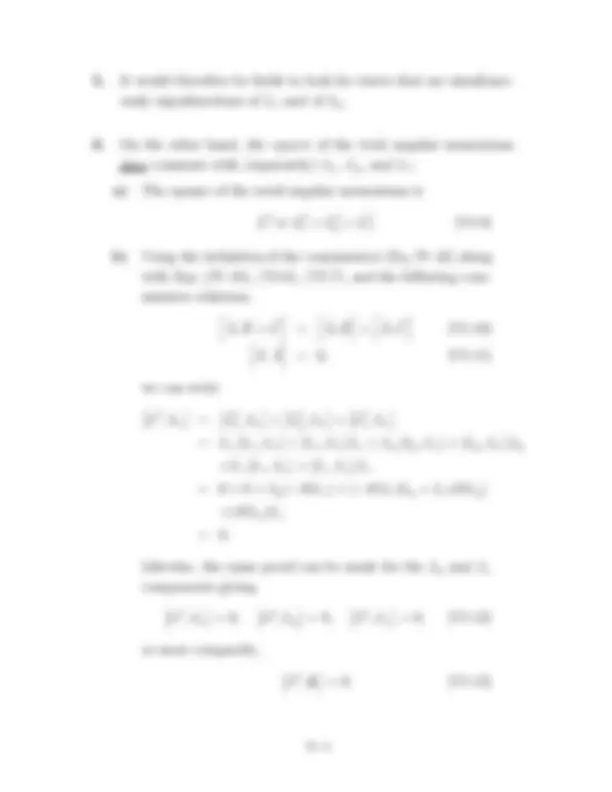
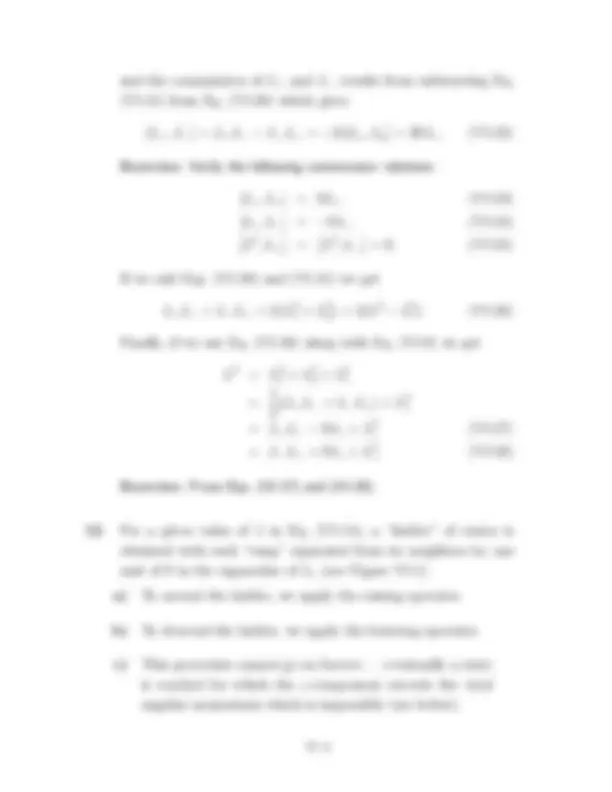
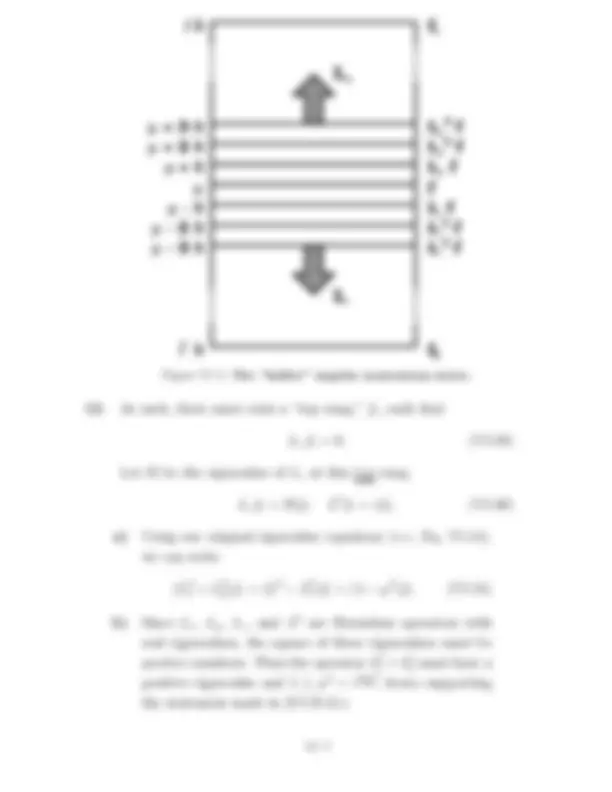
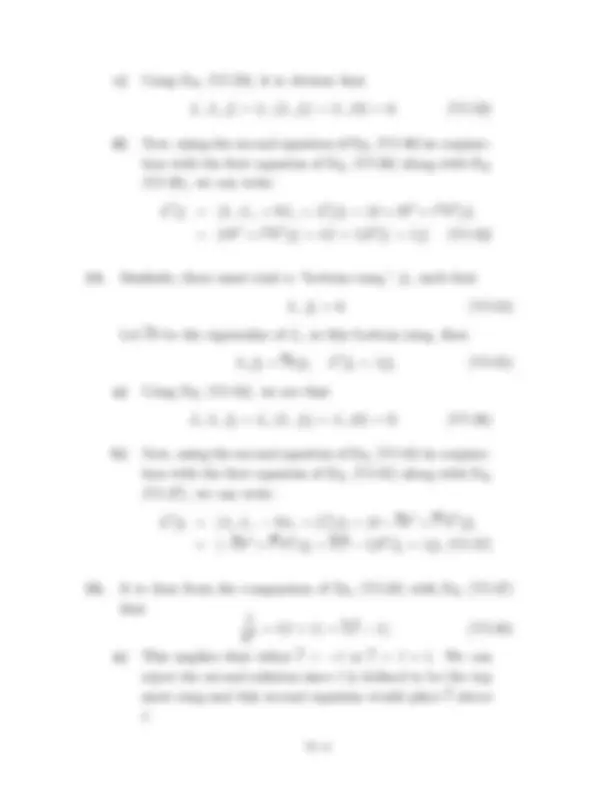
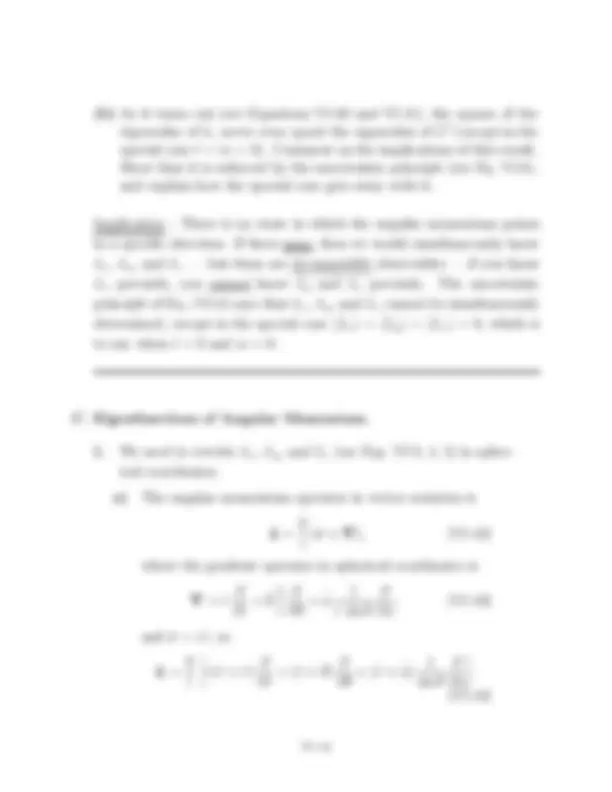
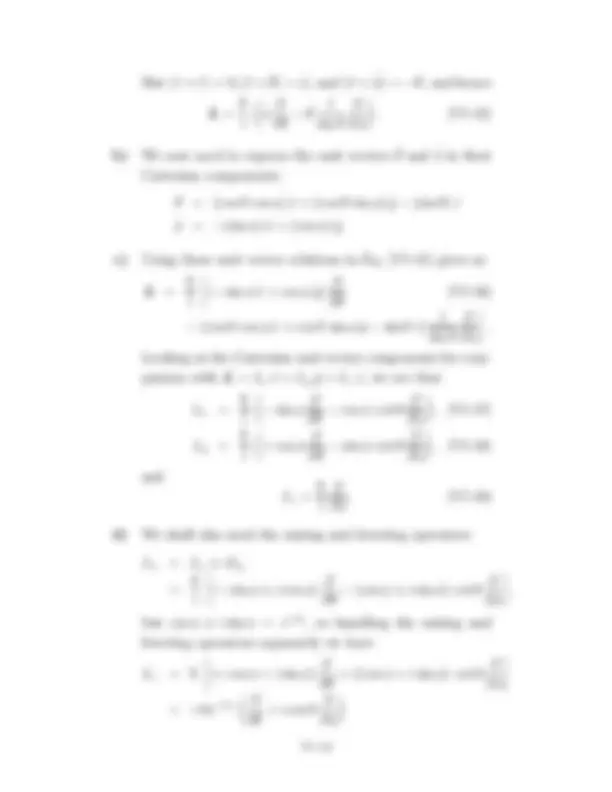
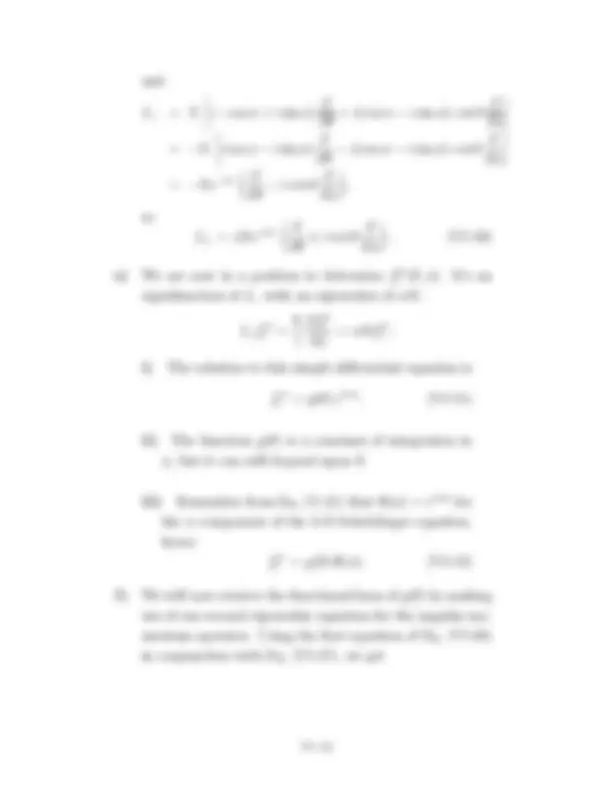
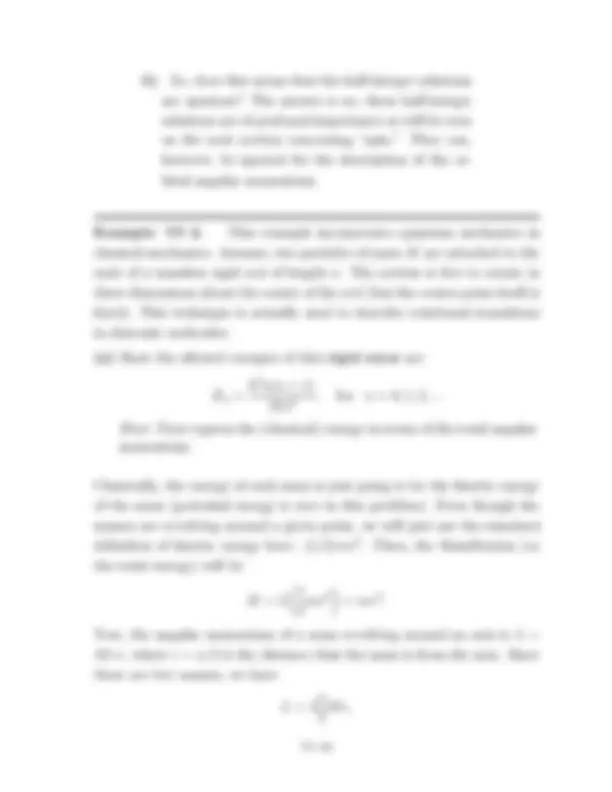
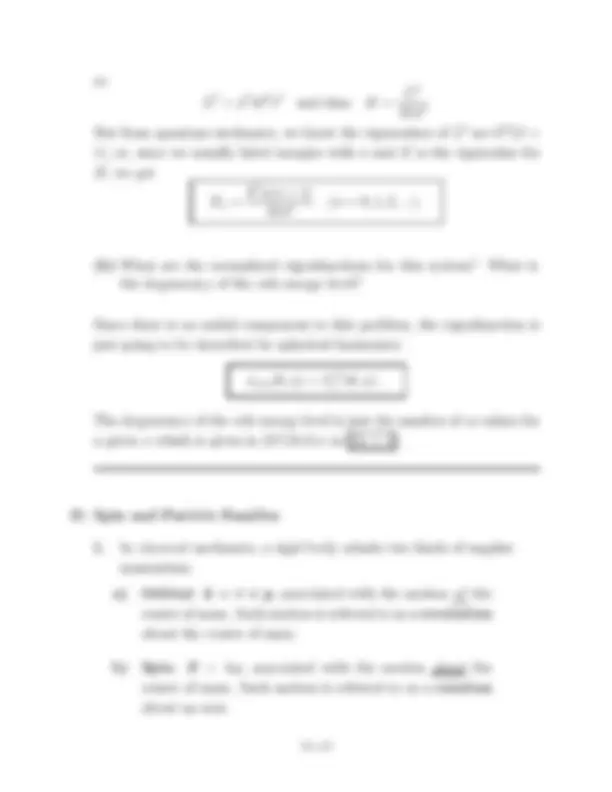
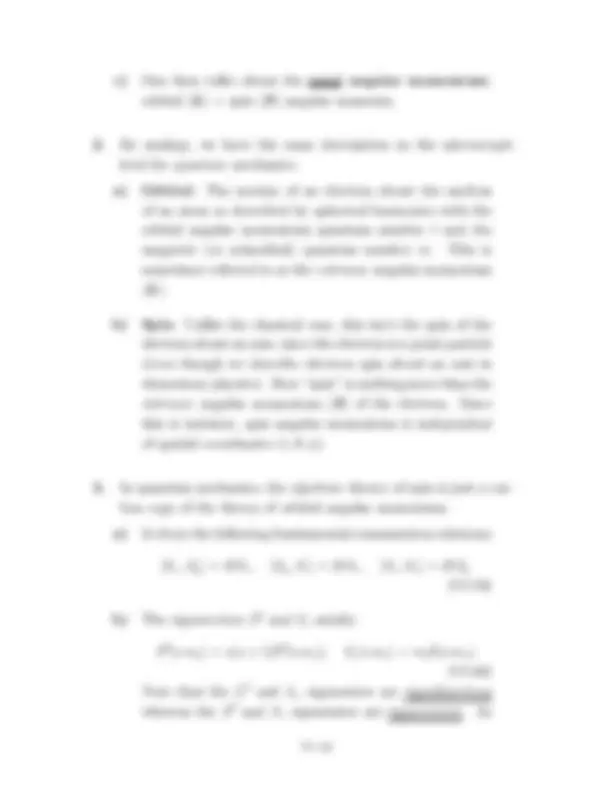
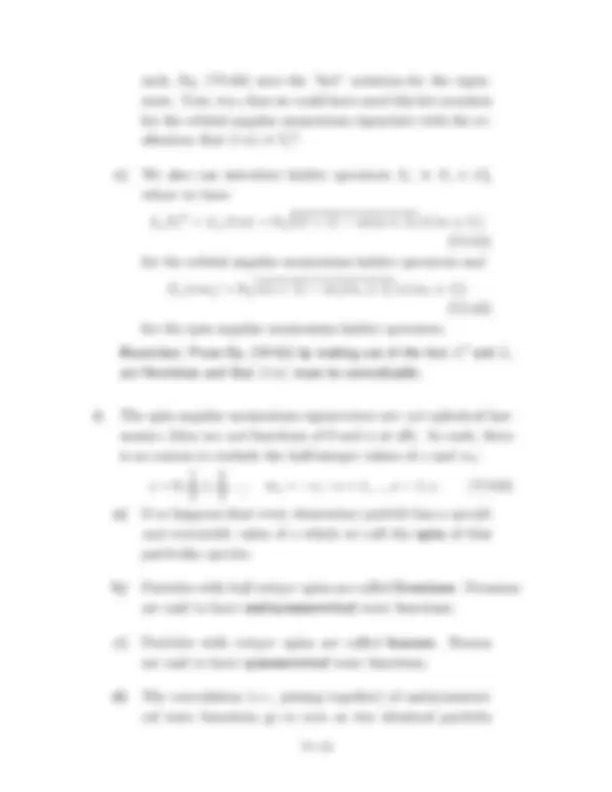
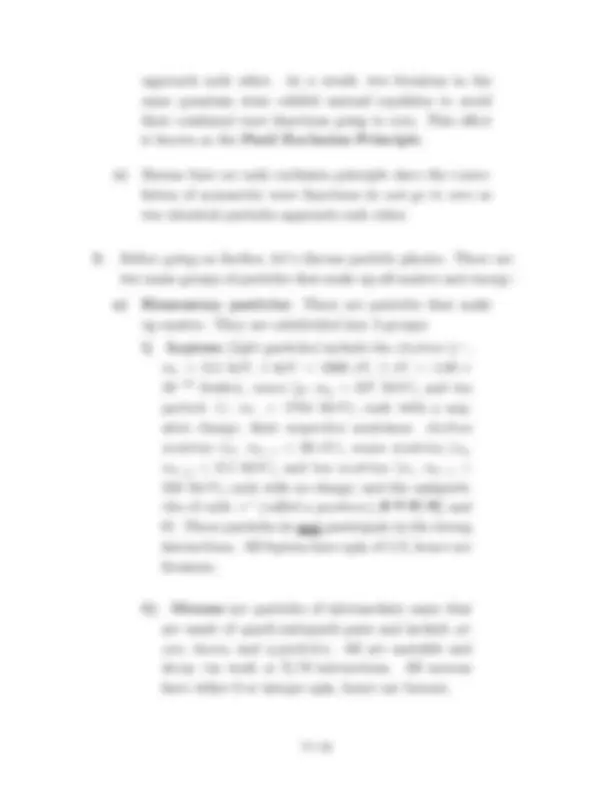
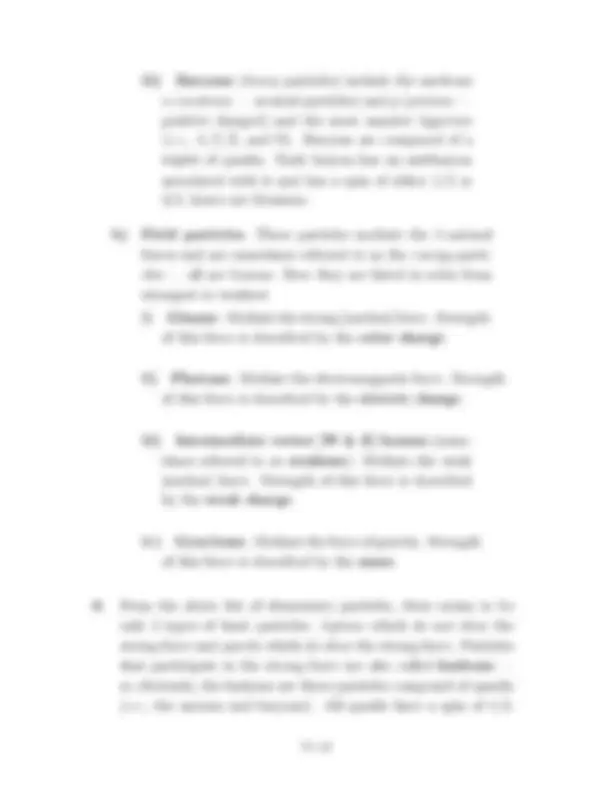
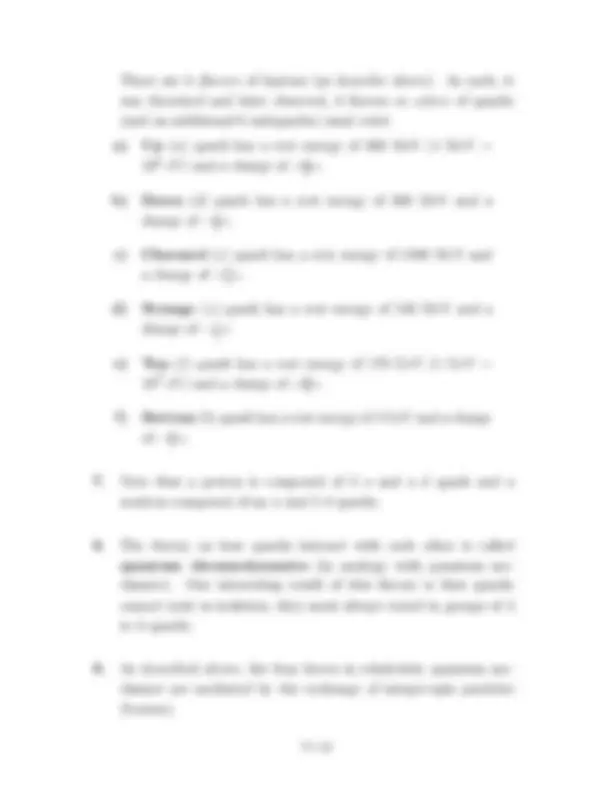
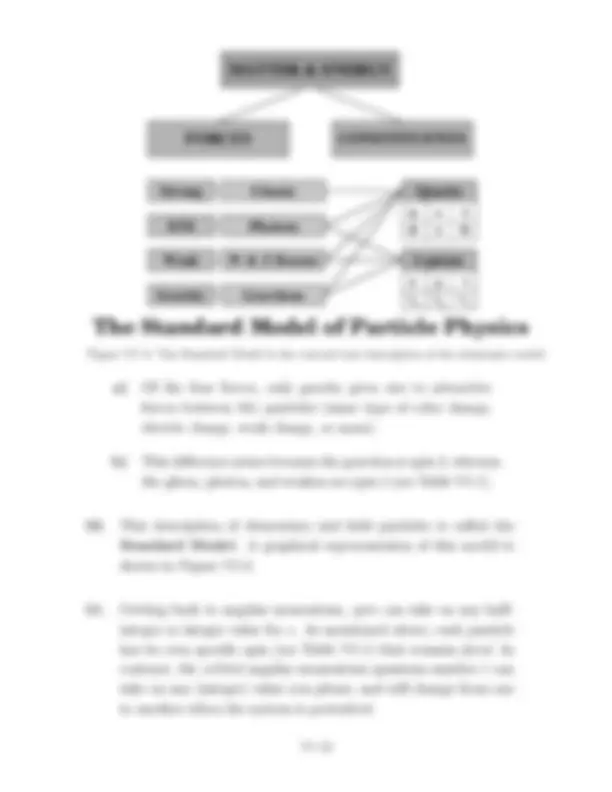
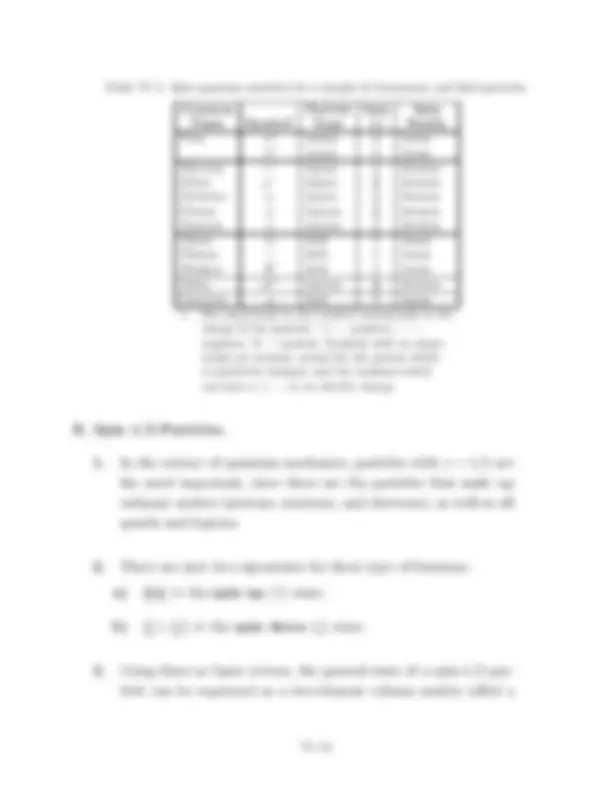
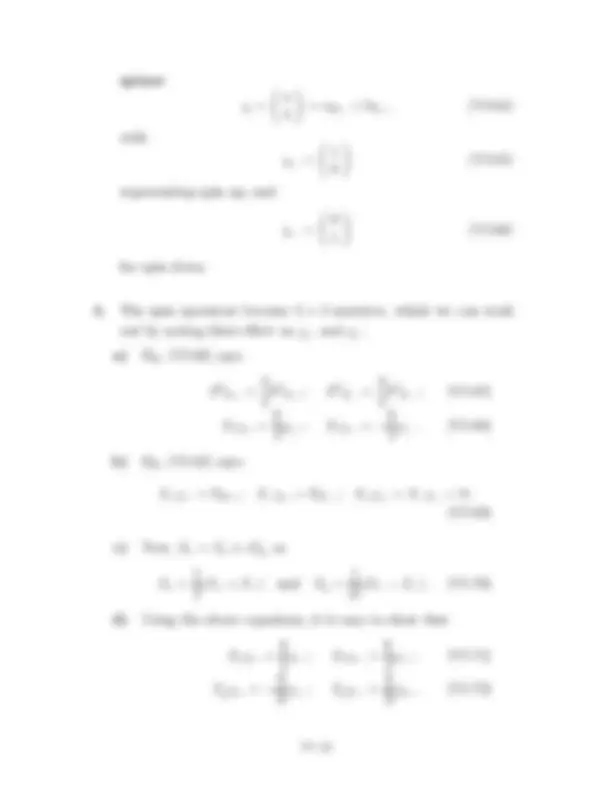
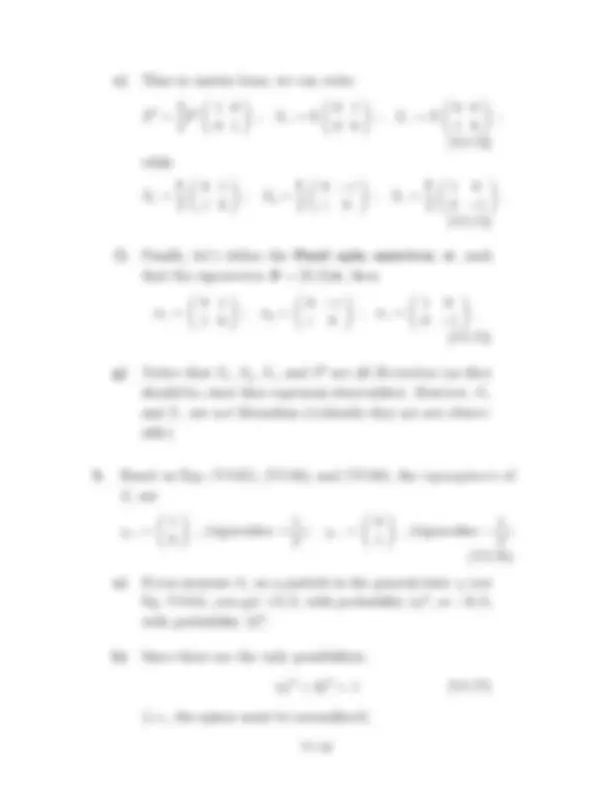
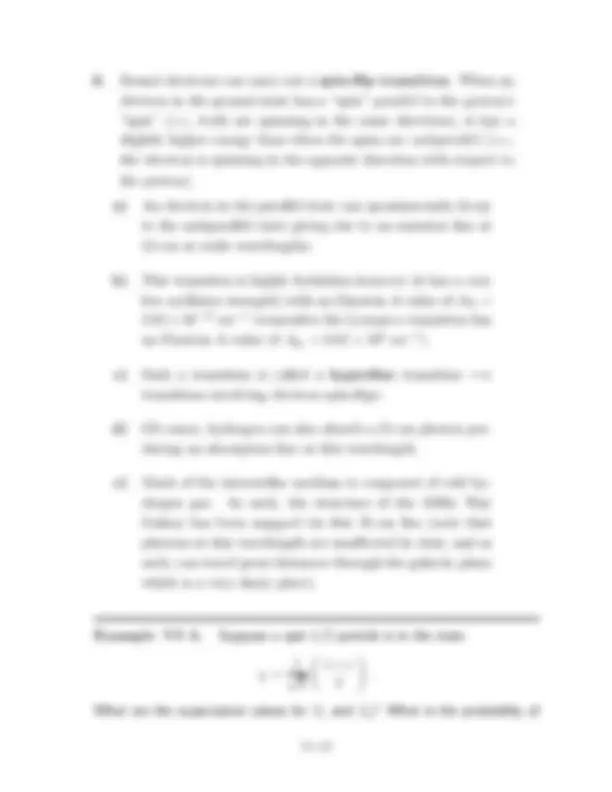
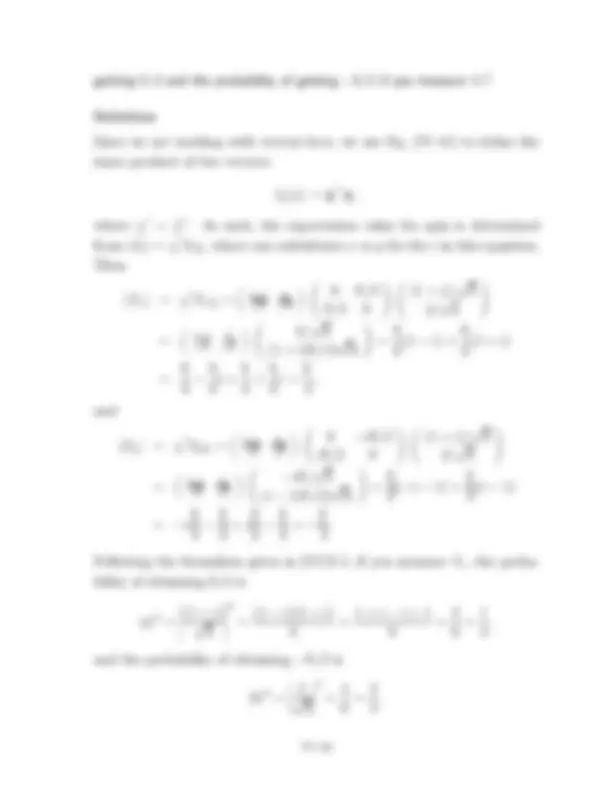
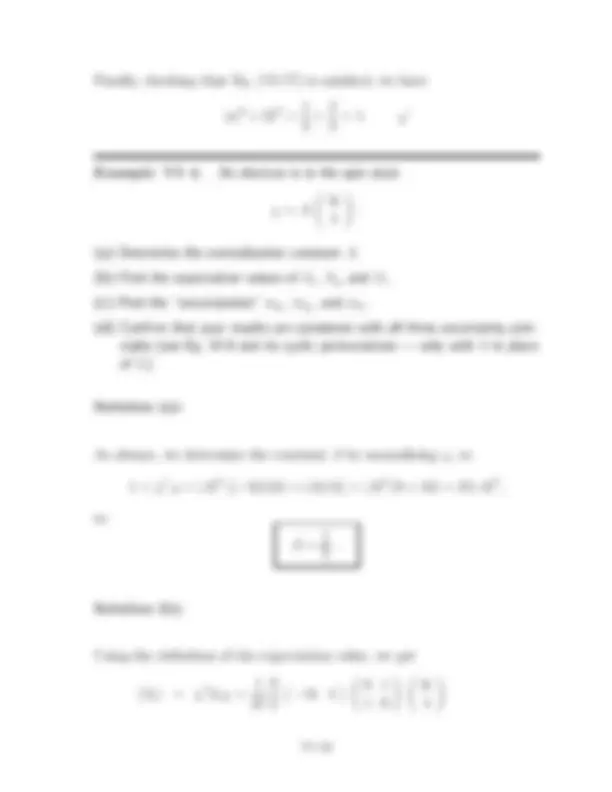
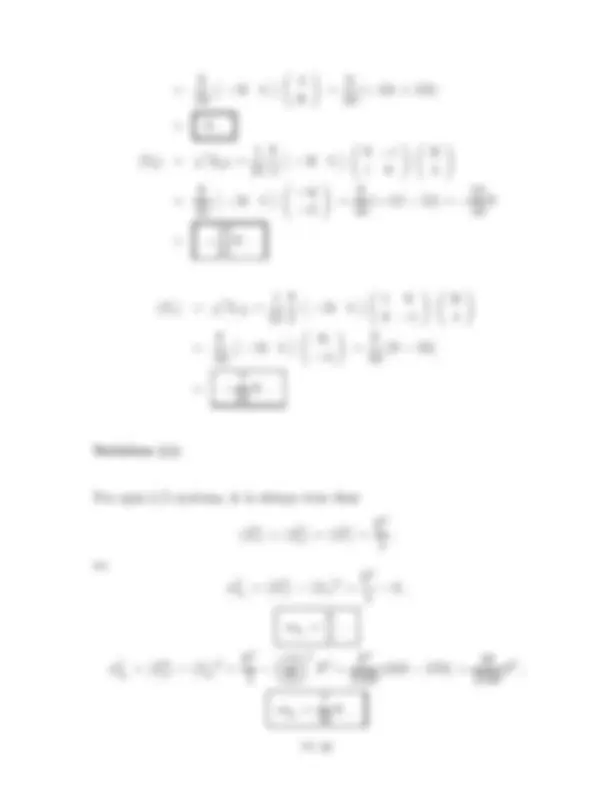
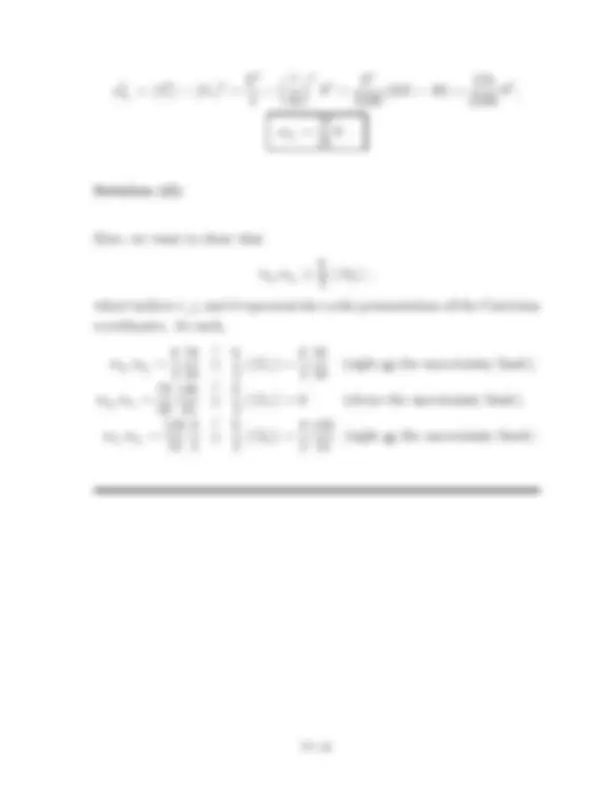


Study with the several resources on Docsity

Earn points by helping other students or get them with a premium plan


Prepare for your exams
Study with the several resources on Docsity

Earn points to download
Earn points by helping other students or get them with a premium plan
Community
Ask the community for help and clear up your study doubts
Discover the best universities in your country according to Docsity users
Free resources
Download our free guides on studying techniques, anxiety management strategies, and thesis advice from Docsity tutors
Material Type: Notes; Class: Quantum Physics; Subject: Physics (PHYS); University: East Tennessee State University; Term: Fall 2006;
Typology: Study notes
1 / 33

This page cannot be seen from the preview
Don't miss anything!


























Dr. Donald G. Luttermoser East Tennessee State University
Edition 5.
Abstract
These class notes are designed for use of the instructor and students of the course Physics 4617/5617: Quantum Physics. This edition was last modified for the Fall 2006 semester.
−z
∂y
( z ∂f ∂x
)
∂y
( x ∂f ∂z
) − z
∂x
( y ∂f ∂z
)
+z
∂x
( z ∂f ∂y
)
∂z
( y ∂f ∂z
) − x
∂z
( z ∂f ∂y
)}
( (^) ¯h i
) 2 y ∂f ∂x
(^2) f ∂y ∂z − zy ∂
(^2) f ∂x ∂z
(^2) f ∂x ∂y
(^2) f ∂z^2 −x ∂f ∂y −^ xz
∂^2 f ∂z ∂y
(^).
[Lx, Ly] f =
( (^) ¯h i
) 2 ( y
∂x − x
∂y
) f = i¯hLzf,
and we conclude (dropping the test function) that
[Lx, Ly] = i¯hLz. (VI-6)
[Ly, Lz] = i¯hLx and [Lz, Lx] = i¯hLy. (VI-7)
Exercise: Prove Eq. (VI-7) by the technique shown in §VI.B.1.
σ^2 Lx σ^2 Ly ≥
2 i 〈ihL¯ z〉
¯h^2 4 〈Lz〉^2 ,
or σLx σLy ≥ ¯h 2 |〈Lz 〉|. (VI-8)
L^2 ≡ L^2 x + L^2 y + L^2 z. (VI-9)
b) Using the definition of the commutator (Eq. IV-42) along with Eqs. (IV-43), (VI-6), (VI-7), and the following com- mutator relations, [ A,^ ˆ Bˆ + Cˆ
[ A,^ ˆ Bˆ
]
[ A,^ ˆ Cˆ
] (VI-10) [ A,^ ˆ Aˆ
] = 0 , (VI-11)
we can write [ L^2 , Lx
[ L^2 x, Lx
]
[ L^2 y, Lx
]
[ L^2 z, Lx
]
= Lx [Lx, Lx] + [Lx, Lx] Lx + Ly [Ly, Lx] + [Ly, Lx] Ly +Lz [Lz, Lx] + [Lz, Lx] Lz = 0 + 0 + Ly(−i¯hLz) + (−ihL¯ z)Ly + Lz(i¯hLy) +(i¯hLy)Lz = 0.
Likewise, the same proof can be made for the Ly and Lz components giving [ L^2 , Lx
] = 0,
[ L^2 , Ly
] = 0,
[ L^2 , Lz
] = 0, (VI-12)
or more compactly, [ L^2 , L
] = 0. (VI-13)
and then from the first equation of Eq. (VI-14), we get
L^2 (L±f) = λ(L±f), (VI-18)
so L±f is an eigenfunction of L^2 with the same eigenvalue λ.
Lz (L±f) = LzL±f − L±Lzf + L±Lzf = [Lz, L±] f + L±(Lzf) = ±¯hL±f + L±(μf) = (μ ± ¯h)(L±f), (VI-19)
so L±f is an eigenfunction of Lz with the new eigenvalues μ ± ¯h.
L+L− = (Lx + iLy)(Lx − iLy) = L^2 x − iLxLy + iLyLx + L^2 y = L^2 x + L^2 y − i[Lx, Ly], (VI-20)
L−L+ = (Lx − iLy)(Lx + iLy) = L^2 x + iLxLy − iLyLx + L^2 y = L^2 x + L^2 y + i[Lx, Ly], (VI-21)
and the commutator of L+ and L− results from subtracting Eq. (VI-21) from Eq. (VI-20) which gives
[L+, L−] = L+L− − L−L+ = − 2 i[Lx, Ly] = 2¯hLz. (VI-22)
Exercise: Verify the following commutator relations:
[Lz, L+] = ¯hL+ (VI-23) [Lz, L−] = −¯hL− (VI-24) [ L^2 , L+
[ L^2 , L−
] = 0. (VI-25)
If we add Eqs. (VI-20) and (VI-21) we get
L+L− + L−L+ = 2(L^2 x + L^2 y) = 2(L^2 − L^2 z). (VI-26)
Finally, if we use Eq. (VI-26) along with Eq. (VI-9) we get
(L+L− + L−L+) + L^2 z = L+L− − ¯hLz + L^2 z (VI-27) = L−L+ + ¯hLz + L^2 z. (VI-28)
Exercise: Prove Eqs. (VI-27) and (VI-28).
b) To descend the ladder, we apply the lowering operator.
c) This procedure cannot go on forever — eventually a state is reached for which the z-component exceeds the total angular momentum which is impossible (see below).
c) Using Eq. (VI-29), it is obvious that L−L+ft = L−(L+ft) = L−(0) = 0. (VI-32)
d) Now, using the second equation of Eq. (VI-30) in conjunc- tion with the first equation of Eq. (VI-30) along with Eq. (VI-28), we can write L^2 ft = (L−L+ + ¯hLz + L^2 z)ft = (0 + ¯h^2 +^2 ¯h^2 )ft = (¯h^2 +^2 ¯h^2 )ft = ( + 1)¯h^2 ft = λft (VI-33)
L−fb = 0. (VI-34) Let ¯h be the eigenvalue of Lz at this bottom rung, then Lzfb =¯hfb; L^2 fb = λfb. (VI-35) a) Using Eq. (VI-34), we see that L+L−fb = L+(L−fb) = L+(0) = 0. (VI-36)
b) Now, using the second equation of Eq. (VI-35) in conjunc- tion with the first equation of Eq. (VI-35) along with Eq. (VI-27), we can write L^2 fb = (L+L− − ¯hLz + L^2 z)fb = (0 − ¯h^2 +^2 ¯h^2 )fb = (−¯h^2 +^2 ¯h^2 )fb = ( − 1)¯h^2 fb = λfb (VI-37)
( + 1) = ( − 1). (VI-38)a) This implies that either = − or = + 1. We can reject the second solution since is defined to be the top most rung and this second equation would place above `.
b) Let N be the number of steps one must make from the bottom () state to get to the top () state, then N = − = +, or ` =
c) At this point, let’s note that L^2 (the angular momentum squared) has the same units as ¯h squared (remember that ` is either an integer or half-integer as shown in Eq. VI- 39), hence the angular momentum has units of ¯h. As such, let’s rewrite the eigenvalue of the Lz operator as μ = m¯h.
d) From these last two points, we see that the maximum value of m is (see Eq. VI-30) and the minimum value of m is − (see Eq. VI-35), where ` can be an integer or half-integer.
e) From this formalism, it is clear that there are 2+ 1 “rungs” (i.e., values of m) in the angular momentum lad- der:, − 1 , − 2 , ..., 1 , 0 , − 1 , ..., −` as shown in Figure (VI-2).
L^2 fm =(+ 1)¯h^2 fm ; Lzfm = m¯hfm , (VI-40) where ` = 0,
2 , ...;^ m^ =^ −,^ −^ + 1, ..., ^ −^1 ,.^ (VI-41) This is the reason why we chose (+1) as our differential equation constant for the Schr¨odinger equation in Eqs. (V-14) and (V-15).
(b) As it turns out (see Equations VI-40 and VI-41), the square of the eigenvalue of Lz never even equals the eigenvalue of L^2 (except in the special case ` = m = 0). Comment on the implications of this result. Show that it is enforced by the uncertainty principle (see Eq. VI-8), and explain how the special case gets away with it.
Implication : There is no state in which the angular momentum points in a specific direction. If there were, then we would simultaneously know Lx, Ly, and Lz — but these are incompatible observables — if you know Lx precisely, you cannot know Ly and Lz precisely. The uncertainty principle of Eq. (VI-8) says that Lx, Ly, and Lz cannot be simultaneously determined, except in the special case 〈Lx〉 = 〈Ly〉 = 〈Lz 〉 = 0, which is to say when ` = 0 and m = 0.
C. Eigenfunctions of Angular Momentum.
L = h¯ i (r × ∇), (VI-42)
where the gradient operator in spherical coordinates is
∇ = ˆr
∂r
r
∂θ
r sin θ
∂φ
and r = rˆr, so
L = ¯h i
[ r(ˆr × rˆ)
∂r
∂θ
sin θ
∂φ
] . (VI-44)
But (ˆr × rˆ) = 0, (ˆr × θˆ) = φˆ, and (ˆr × φˆ) = −θˆ, and hence
L = ¯h i
( φ^ ˆ ∂ ∂θ − θˆ
sin θ
∂φ
)
. (VI-45)
b) We now need to express the unit vectors θˆ and φˆ in their Cartesian components: θˆ = (cos θ cos φ) ˆx + (cos θ sin φ) ˆy − (sin θ) ˆz φ^ ˆ = −(sin φ) ˆx + (cos φ) ˆy.
c) Using these unit vector relations in Eq. (VI-45) gives us
L = ¯h i
[ (− sin φ ˆx + cos φ yˆ)
∂θ
− (cos θ cos φ xˆ + cos θ sin φ yˆ − sin θ zˆ)
sin θ
∂φ
] .
Looking at the Cartesian unit vector components for com- parison with L = Lx xˆ + Ly yˆ + Lz zˆ, we see that
Lx = ¯h i
( − sin φ
∂θ −^ cos^ φ^ cot^ θ
∂φ
) , (VI-47)
Ly = ¯h i
(
∂θ − sin φ cot θ
∂φ
) , (VI-48)
and Lz = ¯h i
∂φ.^ (VI-49)
d) We shall also need the raising and lowering operators:
L± = Lx ± iLy = h¯ i
[ (− sin φ ± i cos φ) ∂ ∂θ − (cos φ ± i sin φ) cot θ ∂ ∂φ
] ,
but cos φ ± i sin φ = e±iφ, so handling the raising and lowering operators separately we have
L+ = ¯h
[ (+ cos φ + i sin φ)
∂θ
∂φ
]
= +¯he+iφ
∂θ
∂φ
)
L^2 f`m =
( L+L− + L^2 z − ¯hLz
) f`m = he¯ iφ
(∂fm ` ∂θ
) ( −¯he−iφ
)
( (^) ∂fm ` ∂θ −^ i^ cot^ θ
∂f`m ∂φ
) − ¯h^2 ∂^2 f`m ∂φ^2 −^
¯h^2 i
∂fm ∂φ = h¯^2(+ 1) fm. (VI-53)
i) At this point, let’s make use of Eq. (VI-51) in Eq. (VI-53). Taking the θ and φ derivatives of Eq. (VI- 51), we get: ∂f`m ∂θ =^ e
imφ dg dθ (VI-54) ∂f`m ∂φ = imeimφ^ g. (VI-55)
ii) Using these equations in Eq. (VI-53) gives
−eiφ
∂θ
) ( ei(m−1)φ
) (^ ∂g ∂θ
)
+m^2 geimφ^ − mgeimφ = eimφ
[ − d dθ
( (^) dg dθ
)
(dg dθ
)
( + 1)geimφ.iii) Canceling eimφ^ gives
−d
(^2) g dθ^2 − m dg dθ cot θ + mg csc^2 θ + (m − 1) cot θ dg dθ +m(m − 1) (1 + cot^2 θ) g = − d^2 g dθ^2 −^ cot^ θ
dg dθ +^ m
(^2) g csc (^2) θ = ( + 1)g.
iv) Now, multiplying each term by − sin θ produces
sin^2 θ d^2 g dθ^2 +sin^ θ^ cos^ θ
dg dθ −m
(^2) g = −(+1)g sin (^2) θ.
v) This is a differential equation for g(θ), but we can write it in the more familiar form of
sin θ d dθ
( sin θ dg dθ
)
( + 1) sin^2 θ − m^2 ] g = 0. (VI-56)m = Θ(θ) Φ(φ) = Y (^)m. (VI-57)a) As such, spherical harmonics are precisely the (nor- malized) eigenfunctions of L^2 and Lz.
b) When we solved the Schr¨odinger equation by separation of variables in §V.A of the notes, we were inadvertently con- structing simultaneous eigenfunctions of the three com- muting operators H, L^2 , and Lz:
Hψ = Eψ, L^2 ψ = (+1)¯h^2 ψ , (^) zψL = m¯hψ. (VI-58)
c) There is a slight inconsistency here: i) The algebraic theory of angular momentum per- mits ` (and hence also m) to take on half -integer values (see Eq. VI-41), whereas the analytic method yielded eigenfunctions only for integer values (see Eq. V-28).
so L^2 = a^2 M^2 v^2 and thus H =
Ma^2
But from quantum mechanics, we know the eigenvalues of L^2 are ¯h^2 ( + 1), or, since we usually label energies with n and E is the eigenvalue for H, we get En = ¯h
(^2) n(n + 1) Ma^2 (n = 0, 1 , 2 , ...).
(b) What are the normalized eigenfunctions for this system? What is the degeneracy of the nth energy level?
Since there is no radial component to this problem, the eigenfunction is just going to be described by spherical harmonics:
ψnm(θ, φ) = Y (^) nm (θ, φ).
The degeneracy of the nth energy level is just the number of m-values for a given n which is given in §VI.B.15.e as 2 n + 1.
D. Spin and Particle Families
b) Spin: S = Iω, associated with the motion about the center of mass. Such motion is referred to as a rotation about an axis.
c) One then talks about the total angular momentum: orbital (L) + spin (S) angular momenta.
b) Spin: Unlike the classical case, this isn’t the spin of the electron about an axis, since the electron is a point particle (even though we describe electron spin about an axis in elementary physics). Here “spin” is nothing more than the intrinsic angular momentum (S) of the electron. Since this is intrinsic, spin angular momentum is independent of spatial coordinates (r, θ, φ).
[Sx, Sy] = i¯hSz, [Sy, Sz ] = ihS¯ x, [Sz, Sx] = ihS¯ y. (VI-59)
b) The eigenvectors S^2 and Sz satisfy:
S^2 |s ms〉 = s(s + 1)¯h^2 |s ms〉; Sz|s ms〉 = ms¯h|s ms〉. (VI-60) Note that the L^2 and Lz eigenstates are eigenfunctions whereas the S^2 and Sz eigenstates are eigenvectors. As